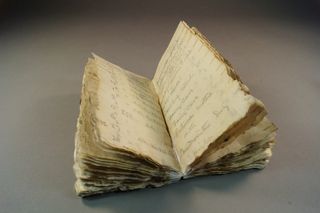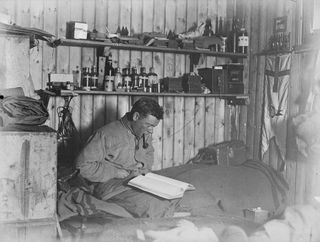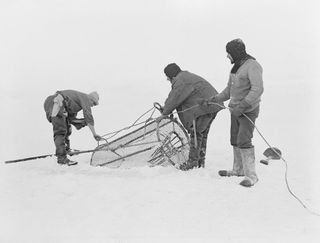Photos: Notebook from Antarctic Quest Found After 100 Years
When snow and ice thawed during the Antarctic summer last year, a notebook was revealed near the century-old base camp that British explorer Captain Robert Falcon Scott established at Cape Evans. Conservationists restored the book — a photo diary from the surgeon and zoologist named George Murray Levick, who was part of Scott's ill-fated Terra Nova expedition from 1910 to 1913.
Just restored

The book contains Levick's notes on the date, subjects and exposure details from his photographs. The pages of the water-damaged book had to be carefully separated and put back together again. This is what it looks like now. (Credit: © Antarctic Heritage Trust New Zealand, nzaht.org)
Keeping warm at Cape Adare

Levick was part of Scott's Northern Party stationed at Cape Adare, which is famous for its colony of Adélie penguins. The Northern Party was stranded at Cape Adare during the winter of 1912, and they survived in a snow cave. That same year, Scott died on his way back from his trek to the South Pole. Levick is shown here smoking a pipe and reading on his bunk in the hut at Cape Adare. He noted this self-portrait in his photo diary. (Credit: © Scott Polar Research Institute, University of Cambridge)
Landscape survey

Levick took this photo of Lieutenant Victor Campbell, first officer on the Terra Nova expedition and leader of Northern Party. Campbell is setting up a theodolite to take measurements during a survey of the landscape. (Credit: © Scott Polar Research Institute, University of Cambridge)
Sign up for the Live Science daily newsletter now
Get the world’s most fascinating discoveries delivered straight to your inbox.
Levick's notes

In these two pencil-scrawled pages, Levick includes references to his photo of Campbell and his photo of members of the Northern Party setting a fish trap. (Credit: © Antarctic Heritage Trust New Zealand, nzaht.org)
Ice fishing

Levick captured three other members of the Northern Party — Raymond Priestley (geologist), Harry Dickason (able seaman) and Frank Browning (petty officer) — putting a cylindrical net into the water in a hole in the ice to catch fish. (Credit: © Scott Polar Research Institute, University of Cambridge)
Follow Live Science @livescience, Facebook & Google+.

Most Popular




